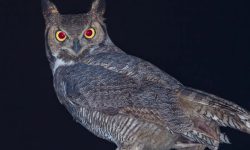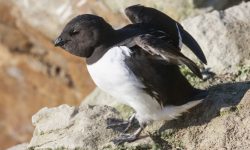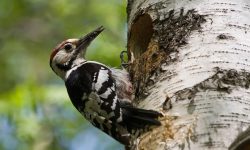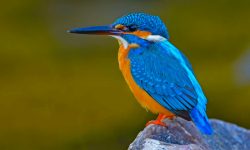Speed has always been one of the greatest natural marvels, especially when it appears in the animal kingdom. Birds, in particular, demonstrate a level of aerial performance that often feels impossible for any living creature. Among them is one species that holds a title no other animal can challenge. Its speed is not only unmatched in the sky but also exceeds that of any creature on land or sea.
Understanding what makes the fastest bird on Earth so remarkable requires more than simply naming the species. It involves uncovering the aerodynamic design, hunting strategy, evolutionary pressures, and physical structure that allow it to reach speeds impossible for the human body to endure. Behind this speed lies a story of survival that has shaped the bird’s behavior, instincts, and ecological importance.
This article dives deep into everything that makes this bird the ultimate speed champion. You will discover how it moves, why it evolved this way, how it hunts, and what role it plays in different habitats. You will also learn how scientists measure its speed, why it outperforms even the fastest human-made jets in certain maneuvers, and what surprising traits most people never expected.
Understanding the Fastest Bird on Earth
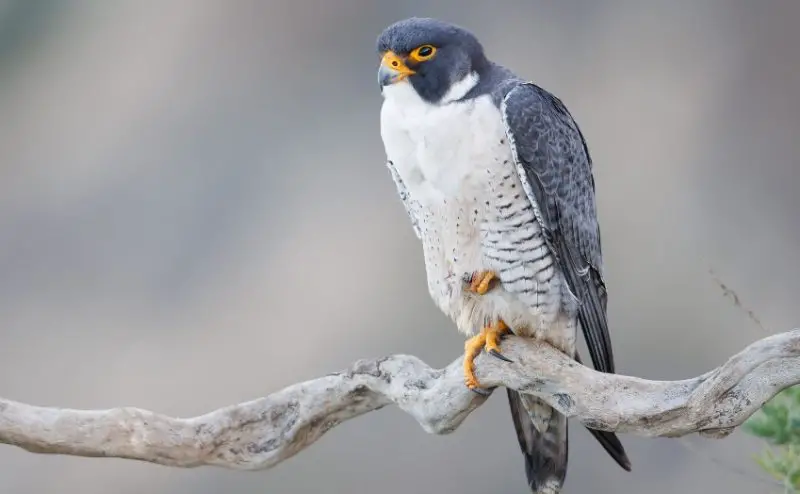
The title belongs to the peregrine falcon
The fastest bird on Earth is the peregrine falcon. Its famous hunting dive, known as the stoop, has been recorded at speeds exceeding 240 miles per hour. No other bird or animal has ever been documented reaching similar velocities. This record has made the peregrine falcon a symbol of power, agility, and aerial dominance.
The peregrine falcon does not maintain these speeds in level flight. Instead, its record-breaking performance appears only during its controlled dive. In level flight, it reaches around 60 miles per hour, still extremely fast compared to most birds. However, it is the dramatic change from horizontal movement to vertical descent that unleashes the bird’s extraordinary capabilities.
This transformation from gliding to diving is not random. It is a refined hunting technique shaped by millions of years of evolution. Every muscle, feather, and bone in its body contributes to this remarkable feat, giving the peregrine falcon the tools it needs to survive in various environments.
Why the peregrine’s speed matters
Speed gives the peregrine falcon a hunting advantage that few predators can match. Prey birds such as pigeons, ducks, and shorebirds often escape other raptors because they can maneuver quickly. However, nothing can outrun or outmaneuver a predator falling from the sky at extreme velocity.
The peregrine’s speed also allows it to dominate enormous territories. A single falcon can cover large areas of coastline, cliffs, and open plains. Its ability to strike suddenly means prey rarely sees the attack coming. The speed is not only a physical achievement but also a tool for shaping ecological balance.
Scientists continue to study this behavior because it represents one of the greatest examples of natural engineering. Each dive demonstrates an understanding of gravity, wind resistance, and aerodynamics that even advanced aircraft struggle to replicate.
How the Peregrine Falcon Achieves Record-Breaking Speeds
The perfect aerodynamic body design
The peregrine falcon’s shape is naturally streamlined. Its body resembles a teardrop when diving. This reduces drag and allows air to flow smoothly across its feathers. The pointed wings and narrow tail act as stabilizers, keeping the bird steady during its descent.
During the stoop, the falcon tucks its wings tightly against its body. This reduces surface area and makes the bird even more aerodynamic. The position also helps maintain balance at incredible speeds. Small adjustments from its tail enable it to steer with precision.
The feathers themselves are highly specialized. They are stiff enough to resist fluttering, which would otherwise create turbulence and slow the bird down. They also fit together tightly, preventing air from leaking through gaps. These details, though small, are essential elements of the falcon’s speed.
A powerful keel and muscle structure
The keel, the central bone that supports the bird’s major flight muscles, is larger in peregrine falcons compared to many birds of similar size. This gives the falcon the strength needed for rapid acceleration and sudden direction changes.
Strong pectoral muscles power wingbeats that help the falcon climb to great heights. Once it reaches the right altitude, it transitions into a dive. This combination of vertical climbing and descending demonstrates an efficient use of both strength and gravity.
Scientists studying the musculature of peregrine falcons discovered that the bird’s muscles are exceptionally resistant to fatigue. This means it can repeat its signature dives multiple times while hunting without slowing down.
The Mechanics of the Stoop: The Most Extreme Dive in Nature
How the dive begins
The stoop starts when the peregrine falcon spots prey from a high altitude. Using its incredible eyesight, it locks onto the target from miles away. Once it chooses a direction, the bird positions itself at the edge of an air current or thermal.
The falcon then folds its wings and begins descending. Gravity takes over, and the bird accelerates quickly. The motion is smooth and controlled. The falcon is not falling passively. It is actively steering through the air, adjusting the angle of descent based on the movement of its prey.
The first part of the dive may not be extremely fast. However, as the falcon continues to descend, the speed increases dramatically. The transition from gliding to diving marks the moment when the bird’s body transforms into a biological missile.
Reaching peak velocity
Once the falcon reaches a certain angle and depth, it enters its fastest phase. The air pressure around its face increases significantly. To protect itself, the falcon uses small bony tubercles inside its nostrils. These structures control the flow of air, preventing pressure from damaging the bird’s respiratory system.
The falcon’s eyes also have a specialized nictitating membrane that acts like a windshield. This protects the eyes from debris and wind while maintaining perfect vision during the dive. No matter how fast the bird becomes, its eyes remain focused on the target.
This attention to detail makes the stoop not only a test of speed but also a demonstration of precision. The falcon must judge the prey’s movement and make split-second decisions during the dive.
Vision: The Secret Weapon Behind the Peregrine’s Speed
One of the sharpest visual systems in the animal kingdom
A peregrine falcon’s eyesight is up to eight times sharper than that of a human. This allows it to detect birds from great distances. Its field of vision is wide, and its depth perception is exceptional.
The falcon uses this visual advantage to locate prey, estimate the correct angle of descent, and adjust its speed based on air currents. Even at 200 miles per hour, it can track rapid movements with incredible accuracy.
This visual clarity ensures that the falcon rarely misses a target once the dive begins.
Special eye structure for high-speed hunting
The peregrine falcon’s eyes contain thousands of light-sensitive cells. These allow it to distinguish small movements from far away. The falcon also has a deep fovea, the part of the eye responsible for sharp vision.
The positioning of the eyes helps the bird maintain a three-dimensional view of its surroundings. This prevents collisions and allows the falcon to maneuver through the air with ease.
Its nictitating membrane, which closes sideways, protects the eyes without blocking vision. This adaptation is essential when diving at extreme speeds.
Hunting Techniques and Strategy
Impact-based hunting method
The peregrine falcon’s typical hunting method relies on impact. Rather than capturing prey directly in its talons during the dive, the falcon strikes the prey at high speed. This collision is often strong enough to stun or kill the prey immediately.
After impact, the falcon circles back and retrieves the prey midair. This strategy reduces the risk of the falcon injuring itself. It also allows the falcon to hunt birds that are highly agile and difficult to catch in level flight.
This impact technique is one of the most energy-efficient hunting methods in the raptor world.
Versatility in different environments
While the falcon prefers open spaces such as cliffs, coasts, and plains, it has adapted exceptionally well to cities. Tall buildings mimic cliffs, and abundant pigeon populations provide prey.
Urban peregrine falcons use skyscraper ledges as launch points for their dives. This has made cities some of the densest peregrine habitats in the world. The birds use the same strategies, relying on height and speed to catch prey in midair.
These adaptations demonstrate the falcon’s impressive ecological flexibility.
The Speed in Level Flight: How It Compares to Other Fast Birds
Peregrine falcon in horizontal flight
Although the peregrine dominates the vertical dive, it is not the fastest bird in level flight. Studies show that its horizontal speed reaches around 60 miles per hour, which is still incredibly rapid.
This horizontal speed allows it to chase prey across open areas. Combined with its maneuverability, the peregrine remains one of the strongest aerial hunters.
Its ability to accelerate quickly gives it a significant advantage in short bursts.
Other fast birds in level flight
The Brazilian free-tailed bat holds the mammal record with flight speeds exceeding 99 miles per hour. Among birds, the swift family holds the title for fastest horizontal flight, reaching speeds near or above 100 miles per hour.
However, no species on Earth surpasses the peregrine falcon’s diving speed. Its stoop remains unmatched and represents the peak of avian acceleration.
Evolutionary Advantages of Extreme Speed
Natural selection favored the fastest hunters
Over millions of years, peregrine falcons developed traits that allowed them to hunt more efficiently. Birds that could dive faster caught more prey, survived longer, and reproduced successfully.
This evolutionary pressure shaped every part of the falcon’s body. From its feathers to its skeletal system, every structure reflects a focus on aerodynamic efficiency and precision.
Speed became the ultimate survival tool. The falcon’s prey evolved to become more agile, pushing the predator to become even faster.
Speed as a defense mechanism
Although peregrine falcons are predators, they also face threats from larger raptors. Speed allows them to escape danger quickly. They can ascend rapidly to avoid eagles or other birds of prey.
Their agility makes them difficult targets. If threatened, the falcon can dive or climb with impressive bursts of power. This ability increases their chances of surviving in competitive environments.
Human Interaction and Conservation Efforts
A species once pushed to the brink
During the mid-20th century, peregrine falcon populations declined dramatically due to pesticide exposure, especially from DDT. The chemical weakened eggshells, causing widespread reproductive failure.
By the 1970s, peregrines were nearly extinct in several regions. Conservationists launched urgent breeding and reintroduction programs to save the species. These efforts required careful management and collaboration between scientists, governments, and volunteers.
Gradually, the population recovered. Today, peregrine falcons are considered one of the greatest conservation success stories in modern history.
Coexisting with urban environments
Urban areas provided new opportunities for peregrine falcons to thrive. Skyscrapers replicate the height of natural cliffs, and cities host abundant prey.
Conservationists installed nesting boxes on tall buildings, bridges, and towers. These efforts attracted breeding pairs and helped stabilize populations.
Today, many cities celebrate their urban peregrine families through webcams and community programs. These interactions create greater public understanding of the species.
FAQs About the Fastest Bird on Earth
What is the fastest bird in the world?
The peregrine falcon is the fastest bird on Earth. It reaches speeds over 240 miles per hour during its hunting dive.
How is the peregrine falcon’s speed measured?
Scientists use high-speed cameras, GPS devices, and wind tunnel studies to measure the bird’s velocity during the stoop.
Can any bird fly faster than a peregrine falcon?
No bird exceeds the peregrine’s diving speed. Some swifts fly faster in level flight, but none match the falcon’s vertical descent.
How does the peregrine falcon survive such speeds?
Special adaptations such as aerodynamic shape, strong muscles, nasal tubercles, and protective eye membranes allow it to withstand extreme pressure.
Why does the peregrine falcon dive instead of chasing prey in level flight?
The dive allows the bird to build incredible speed and surprise its prey. This method is more efficient and successful than horizontal pursuit.
Do peregrine falcons only eat birds?
Most of their diet consists of birds, but they sometimes hunt bats or small mammals, depending on the region.
Are peregrine falcons aggressive?
They are territorial and defend nests strongly. However, they rarely show aggression toward humans unless nesting is disturbed.
Where do peregrine falcons live?
They inhabit nearly every continent, thriving in mountains, coasts, deserts, forests, and cities.
How long do peregrine falcons live?
Wild peregrines typically live around 13 to 17 years. Some captive falcons live longer with veterinary care.
Are peregrine falcons endangered today?
No. They have made a strong recovery thanks to conservation programs, though they are still protected in many regions.
Final Thoughts
The peregrine falcon’s title as the fastest bird on Earth is not just a matter of speed. It reflects an extraordinary level of adaptation that demonstrates how evolution shapes life with precision. Its diving ability represents the most extreme example of natural acceleration ever recorded in the animal kingdom.
Understanding how the peregrine achieves such speed reveals more than aerodynamic secrets. It shows the delicate balance between predator and prey, the importance of environmental survival strategies, and the value of conserving species that play essential roles in ecosystems.
Whether you observe peregrines soaring above cliffs or diving between skyscrapers, their presence is a reminder of nature’s remarkable engineering and the enduring power of wildlife to astonish and inspire.


